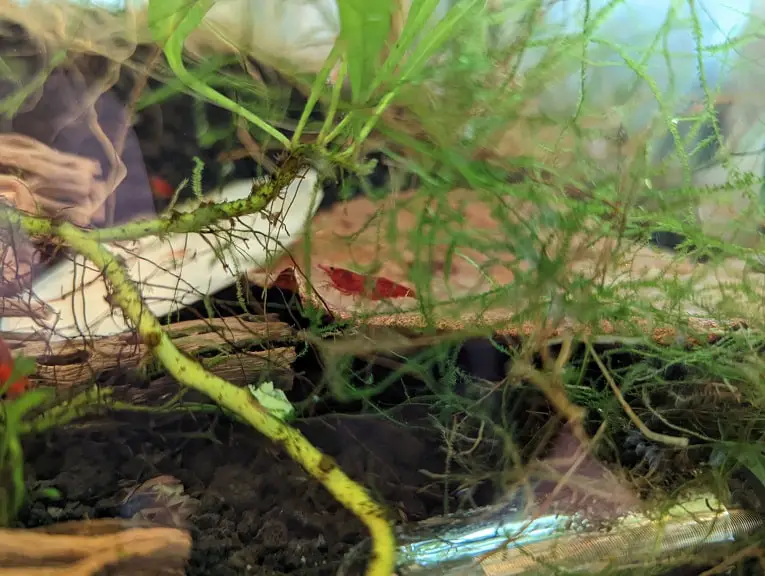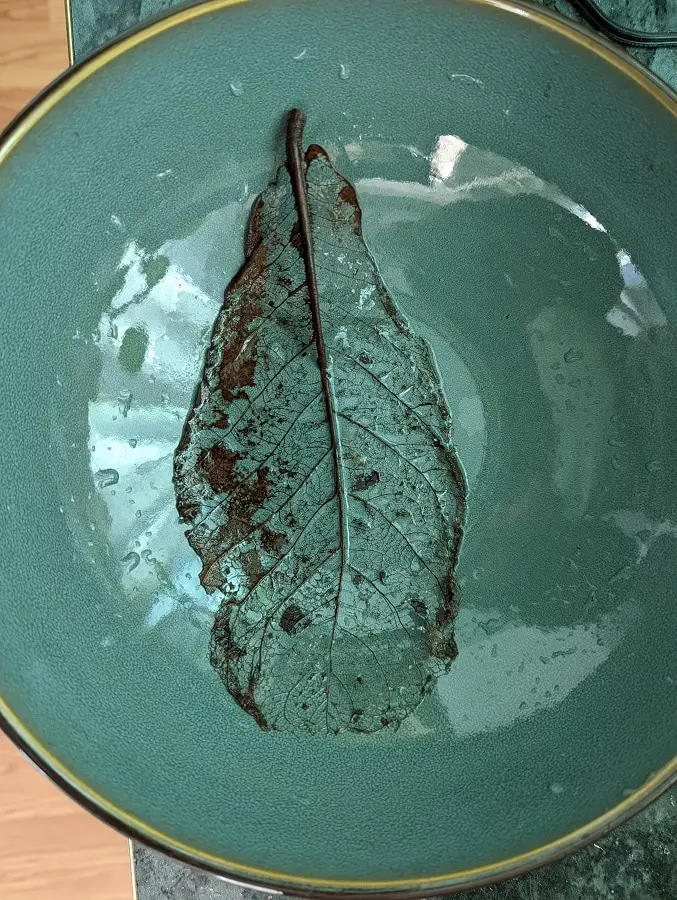Indian Almond Leaves offer many benefits to your fish tank and/or shrimp tank.
You can check out this step-by-step guide at Aquarium Blueprints to see how you can properly add them into your aquarium without stressing and harming your aquatic pets.
What are the benefits of adding Indian Almond Leaves to your fish tank or shrimp tank?
Indian Almond Leaves, also known as Terminalia Catappa Leves, will release tannins when decomposing. These tannins contain antifungal and antibacterial that will help your shrimp or fish recover from some infections. Furthermore, this product can also be used as a preventive measure to stop your pets from getting sick in the first place.
Another benefit is food. All shrimps, as well as some fish, will pick at the Indian Almond Leaf as it decomposes. Therefore, it can be utilized as a snack in between meals. This is especially helpful for newborn shrimps who will most likely have a hard time competing against bigger shrimps and fishes when it comes to eating manufactured powder or pellet foods.

Indian Almond Leaves will also help slowly lower your pH, which is helpful if you have a fish or shrimp that prefers more acidic water. Some species also requires for acidity to breed.
Moreover, adding enough of these will turn you’re your tank water brownish, creating a unique look for your aquarium.
Last but not least, leaves will provide hiding spots for your fish fry and baby shrimp. Otherwise, these smaller inhabitants in your aquarium will get easily eaten by the bigger fishes.
How to add Indian Almond Leaves in your fish tank or shrimp tank
In order to safely add Indian Almond Leaves into your aquarium, we recommend taking the following steps:
1. If you haven’t done so already, make sure you have an Indian Almond Leaf ready for use.
If you don’t, then you can purchase the SunGrow Catappa Indian Almond Leaves on Amazon with this link. (#CommissionsEarned)
2. We suggest adding just one Indian Almond Leaf at a time.
This is because adding too much may cause a dramatic shift to your water pH, causing stress and potentially harming your fish. Shrimps are especially sensitive to changing parameters.
If you want to add more, then we recommend adding an additional leaf 24 hours apart so that it will give your pets time to slowly acclimate.
3. Before adding the Indian Almond Leaf to your fish tank or shrimp tank, we highly recommend boiling it.
This will kill off any unwanted bacteria, pathogens and hitchhikers on the leaf. Furthermore, it will also clean off any dust and dirt particles. Finally, boiling will help get the leaf waterlogged, which will make it easier for it to sink to the bottom of your tank.
4. To boil put the leaf in water.
If you are using tap water, then we suggest adding a drop of a dechlorinator, such as Seachem Prime, as an extra precaution so that you don’t accidentally add chlorine or chloramine to your aquarium. Both of the compounds will kill the beneficial bacteria that help consume the harmful ammonia and nitrites from organic wastes.
Boiling the tap water should help remove a vast majority, but not all, of the chlorine or chloramine, from your tap water. Therefore, adding some dechlorinator will help.
5. Next, you can boil the leaf for at least 5 minutes on a stove.
You can also microwave the leaf but putting it in a bowl of water and then putting a plastic wrap on top. Make sure you leave a small opening at the top.
Alternatively, you can simply put the leaf in a bowl and then add boiling water.

6. After boiling the Indian Almond Leaf, leave it in the water and then let the water cool down for at least 30 minutes.
This will give your leaf additional time to get waterlogged, which will make it easier to sink down.
7. After letting the boiling water cool down, remove the leaf from the bowl and then put it in your tank.
If the leave is still floating, then you can put try partially burying it under the substrate and weigh it down using a rock or décor. Alternatively, you can simply let it stay afloat until it gets waterlogged enough to sink on its own accord.
8. After some time, the Indian Almond Leaf will slowly decompose.
9. After the lamina skin of the leaf has mostly disappeared, leaving only the skeletal petiole, midrib and veins remaining, we recommend removing the leaf from your aquarium.

This is because the Indian Almond Leaf will no longer contain any benefits for your tank. Instead, it will just slowly continue to decompose, increasing the ammonia, nitrite and nitrates levels of your tank water.
